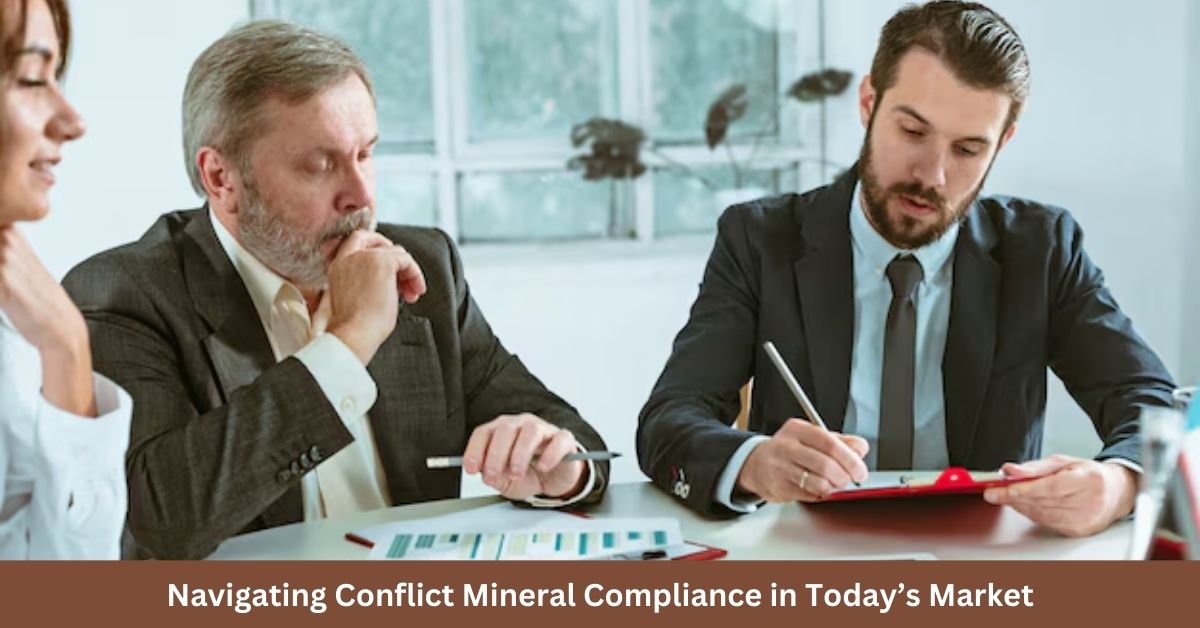As global trade expands and ethical sourcing becomes a central concern, companies are facing increasing pressure to comply with conflict mineral regulations. This article explores the essentials of conflict mineral compliance, its challenges, and how SDS services can support businesses in maintaining ethical and regulatory standards.
What is Conflict Mineral Compliance?
Some minerals like tin, tantalum, tungsten, and gold, often referred to as “3TG,” are conflict minerals. These minerals, when they come from conflict areas like DRC (Democratic Republic of the Congo), have been linked to funding armed groups and supporting violence in those areas. To address this issue, laws like the Dodd Frank Act (Section 1502) have been put in place. These laws require companies to disclose their use of these minerals and take steps to ensure that their products are not contributing to conflicts.
Why Conflict Mineral Compliance Matters
Compliance with conflict mineral regulations is not just about legal obligations; it’s about ethical responsibility and protecting a company’s reputation. Businesses that fail to comply may face hefty fines, legal consequences, and significant damage to their brand image. Consumers and investors are increasingly holding companies accountable for their supply chain practices, making compliance a key factor in sustaining longterm business success.
The Role of SDS Services in Compliance
Being compliant with regulations, like those related to conflict minerals, is crucial for businesses. Safety Data Sheet (SDS) services provide detailed information about handling, storing, and risks associated with chemical substances. These services focus on chemical safety but also help companies keep track of the materials they use and ensure they meet regulatory requirements, which is essential for conflict mineral compliance.
Key Steps in Conflict Mineral Compliance
Conducting Due Diligence: To comply with conflict mineral regulations, companies must thoroughly investigate their supply chains to trace the origin of 3TG minerals. This involves working very closely with suppliers to ensure that the materials used are sourced from conflict free areas. Accurate documentation and verification are essential components of this process.
Risk Assessment: After mapping out the supply chain, companies need to assess the risks associated with sourcing minerals from specific regions. This step helps identify any potential links to conflict areas, allowing businesses to take proactive measures to mitigate these risks.
Reporting and Transparency: Companies are required to report their conflict mineral compliance efforts, often submitting detailed documentation to regulatory bodies such as the SEC. Transparency is crucial here, as stakeholders increasingly demand visibility into a company’s sourcing practices.
Engaging with Suppliers: Building strong relationships with suppliers is essential for ensuring compliance. Companies must clearly communicate their expectations regarding conflict free sourcing and work collaboratively with suppliers to resolve any issues that may arise.
Auditing and Verification: Regular audits of the supply chain are necessary to ensure ongoing compliance. This may involve onsite inspections and third party verification to confirm that the materials used are indeed conflict free.
Challenges in Achieving Compliance
Complying with conflict mineral regulations presents several challenges, primarily due to the complexity of global supply chains. Tracing the origin of minerals through multiple tiers of suppliers can be daunting, particularly when documentation and reporting standards vary across regions.
Another significant challenge is the dynamic nature of conflict areas. As political and social conditions change, regions that were once considered conflict free may become problematic. Companies must stay vigilant and continuously monitor their supply chains to avoid sourcing from newly identified conflict zones.
The Growing Importance of Compliance
As awareness of ethical sourcing continues to rise, conflict mineral compliance is becoming increasingly important. Businesses that fail to address this issue may find themselves at a competitive disadvantage, as consumers and investors gravitate toward companies that demonstrate a commitment to responsible sourcing.
Technology is becoming more and more important for compliance efforts. For example, blockchain technology can create a clear and secure record of mineral transactions, making it easier to confirm where materials come from. Companies that use these kinds of technologies will probably have an easier time following the rules and earning trust from their stakeholders.
Best Practices for Ensuring Compliance
Stay Updated: Companies must keep up to date with the latest regulations and high industry standards regarding conflict minerals. It’s important to adjust compliance strategies accordingly.
Implement Comprehensive Due Diligence: Thorough due diligence is the cornerstone of conflict mineral compliance. Companies should invest in systems that allow them to trace the origin of minerals accurately and assess risks effectively.
Foster Collaborative Supplier Relationships: Working closely with suppliers is key to ensuring compliance. This involves clear communication, support, and resources to help suppliers meet the necessary standards.
Leverage SDS Services: Integrating SDS services into the compliance process can enhance a company’s ability to track and manage the materials they use. This not only supports conflict mineral compliance but also strengthens overall regulatory adherence.
Regular Audits and Verification: Continuous monitoring of the supply chain is essential. Regular audits and the use of third party verification can provide assurance that the company’s compliance efforts are effective.
Conclusion
Navigating conflict mineral compliance in today’s market requires a comprehensive approach that includes diligent supply chain management, strong supplier relationships, and the strategic use of SDS services. By staying informed, implementing best practices, and embracing new technologies, companies can meet regulatory requirements and demonstrate their commitment to ethical sourcing. As the market evolves, those who prioritize conflict free supply chains will be better positioned to succeed in a business environment where transparency and responsibility are increasingly valued.


